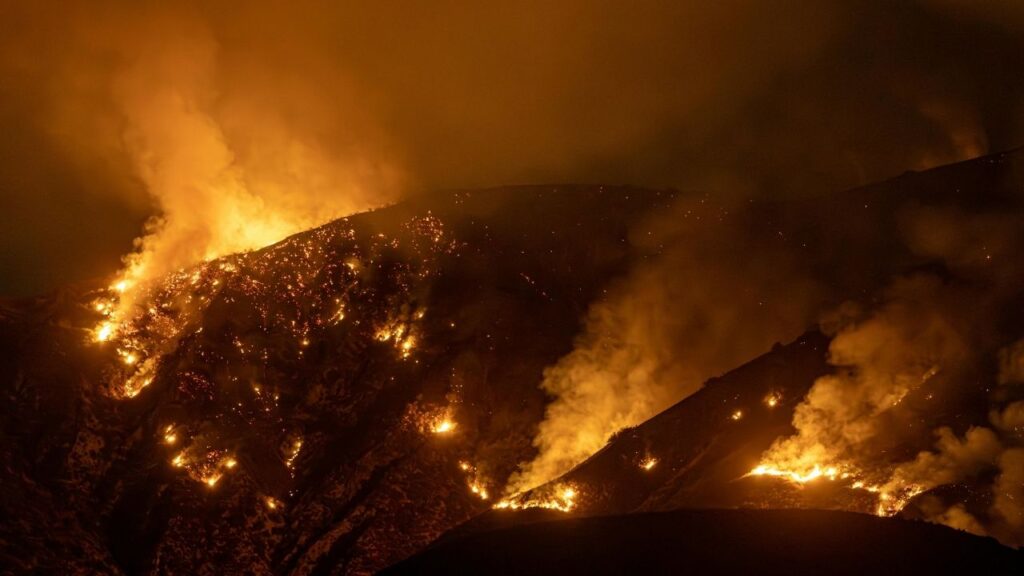
Have you seen the recent news about the fire in Palisades, Los Angeles? Its quick spread showed everyone how important it is to protect your home from unexpected fire dangers. Hence the question is “does your house have a passive fire protection system?” If so, it indicates that you recognize the potential dangers that could occur in or around your home. Passive fire protection systems are typically prepared from the very beginning of a construction project. You, together with the interior designer and the contractor, may already be planning to build a structure that can withstand various fire risks.
Besides, you might also want all equipment and surfaces in the house to be coated with certain substances to increase their resistance to fire. When builders arrange the use of materials and structural components for partitions, they will calculate the appropriate fire-resistance rating based on the conditions in the field. Through this process, each part of your home is designed to hold up against heat, fire, and smoke for a specified period of time, ensuring better safety for everyone inside.
Contents
Building Fire Protection
Before we talk more about fire-resistance ratings, it’s helpful to understand the building’s overall fire protection system. A comprehensive fire protection plan typically consists of both active and passive fire protection measures.
What is the Difference Between Active and Passive Protection?
The difference between active and passive protection systems is quite clear. Active fire protection systems generally use water or chemicals to actively extinguish fires. Fire extinguishers, sprinklers, smoke detectors, and fire alarms are typical examples of active protection. Meanwhile, passive fire protection focuses on how materials and structural design can contain or slow the spread of fire, often without manual or automatic triggering.
Active Fire Protection Means
An active fire protection system is installed to detect and extinguish fires in a specific area. Common examples you will find include:
- Smoke Detector
This device detects fire or heat early on and sends a signal to an alarm or fire control panel. - Fire Alarm
The alarm can work automatically (triggered by the smoke or heat detector) or manually (activated by a person in case of emergency). Once triggered, it warns occupants to evacuate immediately. - Hydrant System
This is typically used for large-scale fire protection in bigger buildings. Hydrants require trained personnel who know how to handle hoses and direct water to the source of the fire. - Fire Extinguisher (Light Fire Extinguisher)
It often contains chemicals or pressurized gases to extinguish smaller fires before they spread. - Sprinkler System
This system automatically releases water to contain or extinguish a fire. It’s especially important in commercial or multi-story buildings where an unattended fire can escalate quickly.
Passive Fire Protection System
Passive fire protection focuses on using fire- and heat-resistant materials, along with proper design methods, to control the spread of smoke, heat, and flames. This system also includes regulating building interiors to reduce overall fire intensity and providing safe exit routes so that evacuation is smooth and quick should a fire break out.
Common facilities and measures in a passive protection system include:
- Smoke and Fire Control
Smoke dampers, fire dampers, and fire-stopping materials help contain fire or smoke within certain compartments. - Compartment System
This is a strategy to separate high-fire-risk areas from low-fire-risk areas, limiting the fire’s spread and giving people more time to escape. - Fire Retardant Materials
Wool, fireproof blankets, fiberglass cloth, and other heat-resistant fabrics prevent or slow combustion. - Evacuation Aids and Facilities
Clear exit routes, emergency lighting, and signage ensure that people can safely leave the building.
By incorporating these features, buildings can better protect occupants, reduce property damage, and potentially lower insurance costs.
Passive Protection Fire Resistance Test Standard
The fire-resistance rating measures how well a passive fire protection material or system can endure standard fire resistance tests. This rating is generally based on how long (in minutes) a system can withstand fire under specific temperatures, pressures, and mechanical loads. For example, you might encounter a 60-minute rating or a 120-minute rating, meaning the component is tested to perform effectively for at least that duration under standardized conditions.
Insulation Rating
Fire-resistance ratings also refer to the insulation level a passive system can provide. This is crucial for keeping the unexposed side of a wall or barrier cool and safe, even when the other side is exposed to high temperatures. You will often find the term “insulation level” linked to “insulating materials,” such as fiberglass cloth, fireproof blankets, or fire-retardant fabrics.
Structural Adequacy
All structural materials used in construction must be capable of supporting vertical axial loads in the event of a fire. For instance, a load-bearing wall might have a 60/60/60 rating, indicating it maintains its load-bearing capacity (structural adequacy), insulation, and integrity for 60 minutes each under test conditions.
Integrity Level
Along with structural adequacy and insulation, the integrity of a component prevents flames and hot gases from passing through cracks or gaps to the unexposed side. Ensuring integrity is especially important in compartmentation strategies, where the goal is to keep the fire from spreading through walls, floors, or ceilings.
Additional Benefits and Considerations
- Compliance with Building Codes: Many local and international building regulations outline minimum fire-resistance ratings for specific structures. Being aware of these regulations helps ensure safety and legal compliance.
- Material Selection: Beyond coatings and fabrics, passive fire protection may involve choosing specific types of steel, concrete, or drywall that meet higher fire-resistance standards. Always consult with professionals to determine the right materials for your project.
- Long-Term Maintenance: Even passive systems need occasional inspections—especially in commercial buildings—to ensure that fire dampers, seals, and coatings remain effective over time.
- Insurance Premiums: Insurance providers may offer better rates if a building meets or exceeds fire safety standards. Installing and maintaining both active and passive fire protection systems can lower long-term costs.
Need Help with a Passive Fire Protection System?
Do you have an obligation to install a passive fire protection system in a building? Do you need high-quality fire-resistant fiberglass products? Consult with us to find out which materials you can rely on for any passive fire protection installation.
SilicaPro will always be your business partner for protecting buildings, vehicles, and machinery from heat and fire. We have exported our high-quality products—each with the best fire-resistance ratings—to many countries, including North America, the Middle East, Europe, South Korea, Japan, Taiwan, India, and more. By implementing effective passive fire protection systems, you’re investing in safety, peace of mind, and the long-term value of your property.

